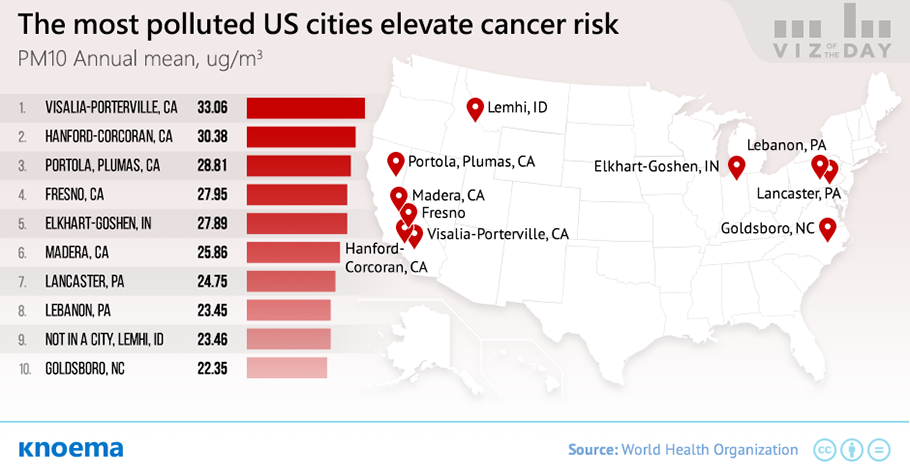Air pollution occurs when chemical, physical or biological substances alter the natural characteristics of the atmosphere, potentially leading to respiratory and other diseases that can be lethal.
- Home furnaces, automobiles, industrial plants, and forest fires are the main sources of air pollution worldwide.
- Among the pollutants of greatest public health concern are particulate matter-including some forms of smoke, soot, dust, salt, acids, and metals - carbon monoxide, ozone, nitrogen dioxide, and sulfur dioxide.
- Not all air pollution is manmade. Natural weather events, such as hurricanes, can also significantly deteriorate air quality, for example. Hurricane-force winds stir up dust throughout the affected areas, including particular matter including in the ranges most harmful to humans, from 2.5 micrometers (PM2.5) to 10 micrometers (PM10)*.
The International Agency for Research on Cancer (IARC) at the World Health Organization classifies particulate matter, the main component of air pollution, as carcinogenic and published a study in 2013 definitively linking air pollution and lung cancer.
- The IARC study - based exclusively on data for the United States - showed a direct correlation between air polluted cities and states and the emergence of new cancer disease cases in polluted regions. California cities included in the study lead ranked highest on the PM10 annual mean level; the state also reported the most new cases of lung and bronchus cancer.
- Separate data from the Environmental Working Group, an American research and advocacy organization, show that states with high levels of water contamination - including California, Oklahoma and West Virginia - also have substantial numbers of cancer cases. Water contamination, however, was not a factor in the IARC study.
Industrial cities and densely populated metropolises are home to many sources of air pollution or otherwise fail to counter natural and manmade pollution sources, creating public planning risk scenarios that require mitigation. Of concern to health officials in urban areas are: large open grounds without any trees or grass and that may also lack protection against erosion; motorization, including exhaust and particulates from the residue of tire friction against asphalt; and winterization of roadways, commonly with sands and other reagents. Rural living conditions in the developing world can present uniquely challenging pollutants because reducing the pollutants would require cultural adaptations. For example, the use of biomass for fuel and home construction as well as poor sanitation in highly travel roadways generates air pollution.
*PM10 is used to describe particles of 10 micrometers or less and PM2.5 represents particles less than 2.5 micrometers in aerodynamic diameter.
